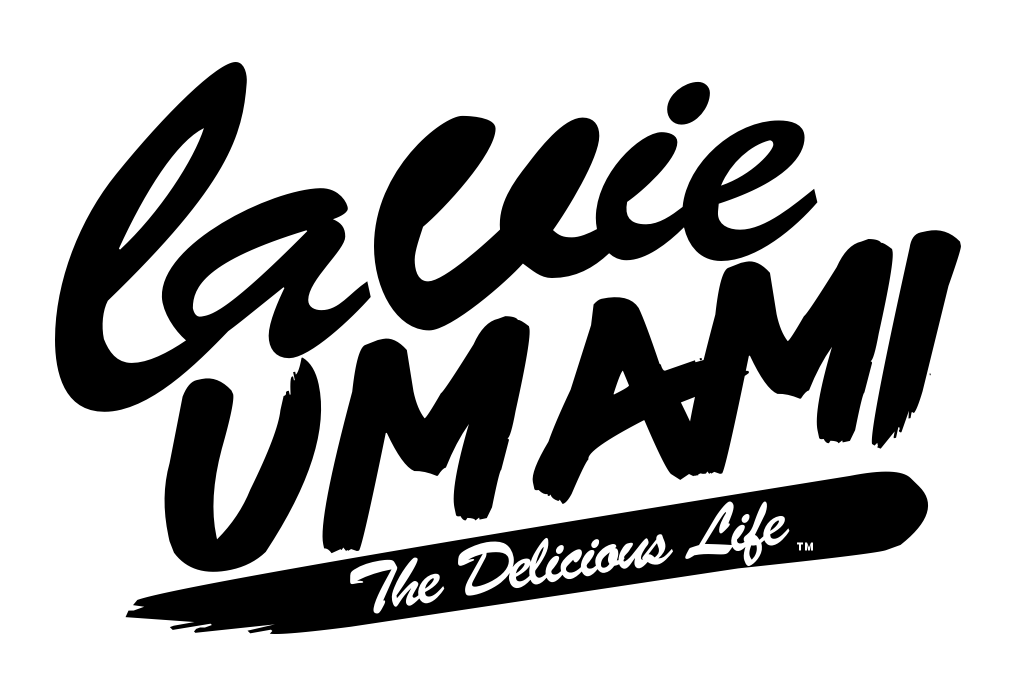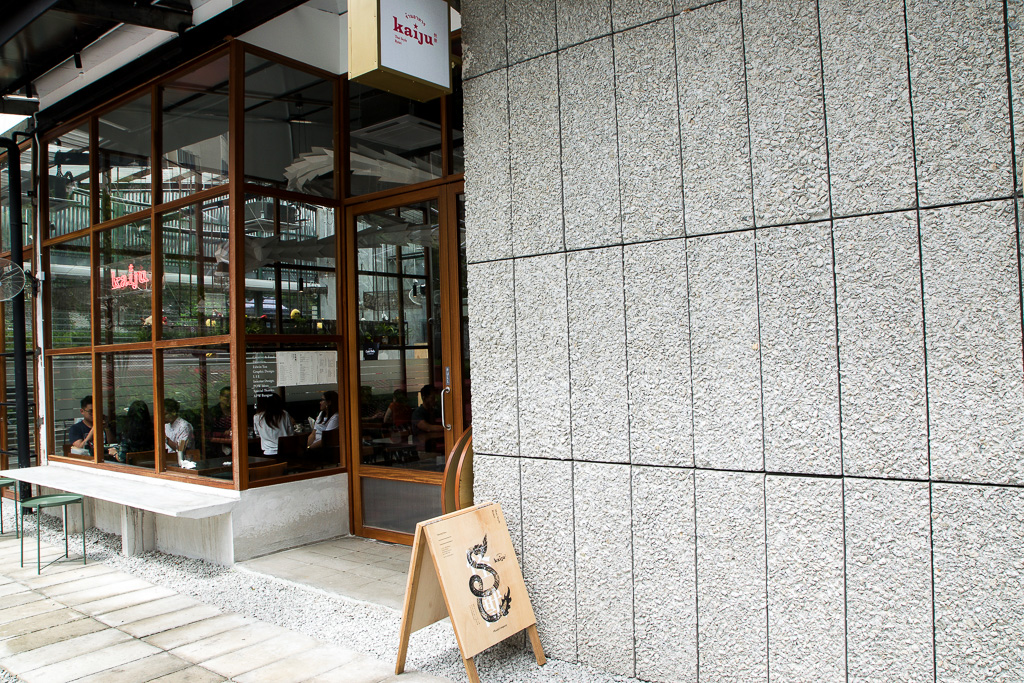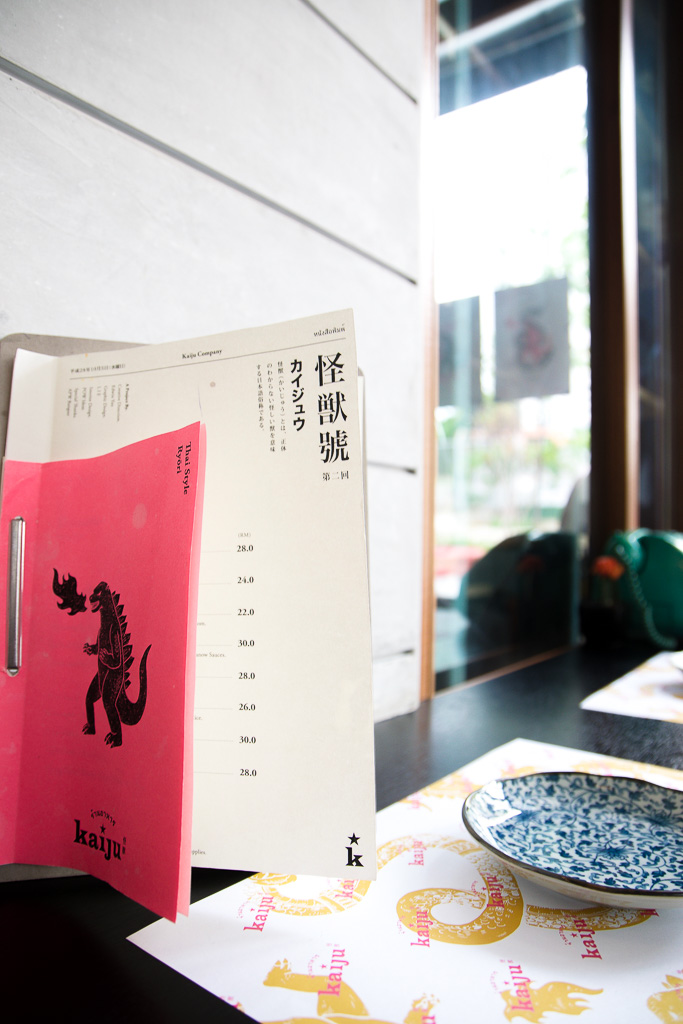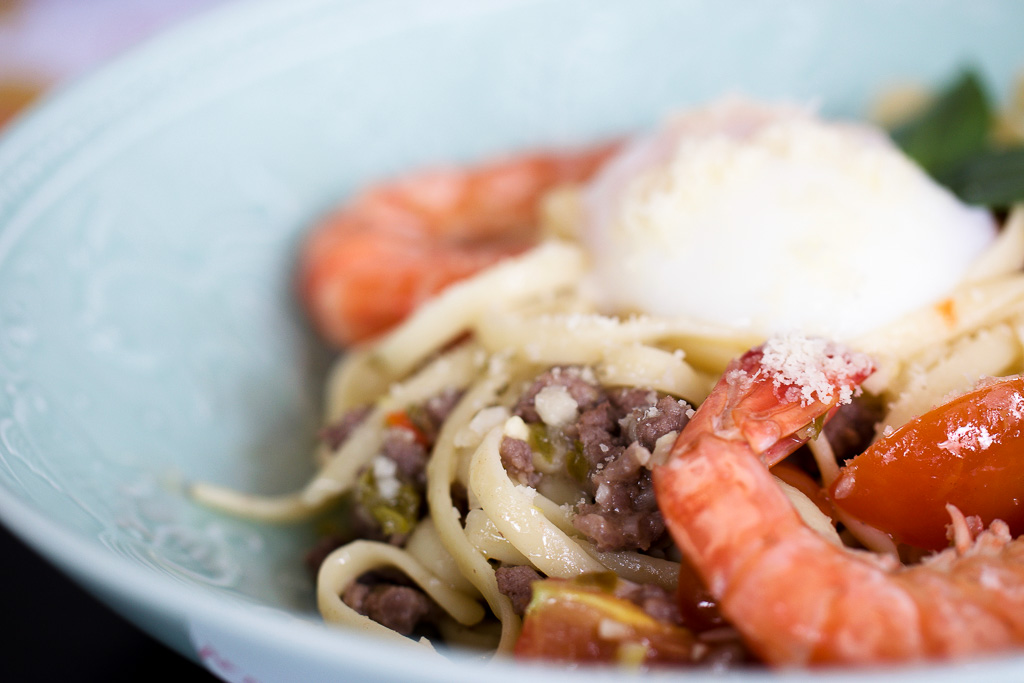Restaurant Review: Kaiju Company
General Information:
Restaurant: Kaiju Company
Address: 29, Jalan Riong, Bangsar, 59100 Kuala Lumpur, Wilayah Persekutuan Kuala Lumpur, Malaysia
- Operation Hours: Daily, 12noon-2.30pm; 6pm-10pm
- Website: https://www.facebook.com/kaijucompany/
* * *
Food: 3/5
Each dish had the necessary components to be called a fusion between Thai and Japanese but due to weak execution and concreteness in concept it couldn’t be truly identified as “fusion” from the get-go.
Menu didn’t quite convey what the restaurant’s signature is or which dish they would consider as their strongest/popular.
I liked their ice-cream (even though it wasn’t “homemade” but outsourced yet it’s the first thing on the menu).
Contrary to what their Kaiju highlights (a fire-breathing monster spewing fire from what I assumed to be spicy dishes) the dishes tasted were lacking in heat.
The dish didn’t live up to their fancy names or the price.
Service: 2/5
Took a while before anyone noticed us (and a few other people proceeding us) at the entrance. This caused the biggest blow to their grading.
Only two servers were present at lunch hour - coupled with my observations of inefficiency especially when trying to be seated/ order.
Server was courteous and knowledgeable enough about their menu to recommend and answer questions regarding what Mannow sauce was or where their Ice-Cream came from.
The time between order and being served was short. Good.
Space: 4/5
Brilliantly designed from the menu to the interior décor to the paper dragon wriggling in the air.
Plastic stools were an interesting part to the restaurant.
Plenty of natural lighting for the instagrammer.
The Revelation of An Amateur Food Critic
The sun was high in the air and the day was hot and humid, such is life living in Malaysia. It was particularly warm that day and not because the temperature was higher than normal but rather the days preceding it were dotted with periods of intermittent rain, cloudiness, and coolness. In any case, on this particularly sun shiny day I had decided to don my new “outfit” for restaurant reviewing and re-start La Vie Umami in earnest - especially the “umami” part of my life, in it’s most literal meaning. Yes, food. 2017 has been quite an interesting year so far, despite only having lived a month or so of the new year. If anything, it has opened my eyes to what it means to be “living.”
It’s nothing as grandiose as flying around the world and saving the unfortunate souls living in war-torn countries or even going around Malaysia fighting the powers at be for alleged corruptions and all that. It’s just something as basic as “enjoying life” with the family who loves us, the friends who stick by us, the food we cook and enjoy, the coming of a new day and all that jazz - it is, as they say, the little things. So here I am, enjoying my new look and the epiphany that came with 2017 ready to light a fire in my soul…through my stomach…but that could have just been heartburn. What better way to do that than at a pizza parlour in the up-and-coming artsy/hipster watering hole known as APW.
Seven or eight months ago Art Printing Works (APW) was primarily known as a printing factory with a good coffee shop (PULP by Papa Palheta) and a newly renovated co-working space (Uppercase). Now, new residents have made this printing factory space their home, mainly restaurants (and a barber shop) - I’ll eventually cover most of these restaurants at LVU but for now let’s talk about that pizza parlour, Proof. It was closed. I admit that I ought to have checked their opening and closing hours before I went all “food critic” but I blame the new jacket for my impatience. In any case, like I said, other restaurants have made APW their home. Mark, my accomplice in art/fashion/food, and I hopped to the restaurant next door and decided to try Kaiju, a Japanese-Thai fusion restaurant.
Similar to my coffee review I will critique the restaurant based on three criteria: Food, Service, and Space (omitting the Coffee aspect of the café review).
Food: Fusion Imbalance
Kaiju is a Japanese - Thai fusion restaurant that makes dishes with elements from both countries like the sweet, spicy, sour combination of thai cuisine and Japanese Udon. I walked through Kaiju doors expecting brilliant dishes that was neither Japanese nor Thai but a fusion of both with enough heat to make my internal temperature no different than the blistering hot Malaysian weather. Did Kaiju deliver? I didn’t think so.
Looking at their menu I couldn’t help but sense that the restaurant lacked concreteness in their fusion vision. I was somewhat perplexed to see that the menu didn’t present their main dish right away (or have their snacks/appetizers first like many restaurants) but a small pink booklet outlining their dessert options (of which were not made on-site but outsourced from a third-party) first. If first impressions are important in any meeting then a menu is a restaurant’s second attempt at making a first impression (or rather, their first impression of the food they will serve). Perhaps it was a design decision rather than a lack of confidence or certainty but well…I simply flipped to “Main Dish” as I would like to have my meal before my deserts.
Kaiju offered a good number of main dishes from Tom Yum Udon to Bara Bara Chirashi and Thonglor Fried Chicken among other things. I was drawn to their Tom Yum Udon and Seafood Mannow Nabe (one within my comfort zone, having tasted numerous Tom Yum, and the other out of sheer curiosity for Mannow). After requesting for a recommendation by the server I was given the option of Tom Yum Udon, Spicy BKK Street Pasta, and Kaiju Open Sandwich. I decided to go with the Tom Yum Udon (RM28), with Okinawa Bittergourd (RM18) from their “Snacks” menu as a starter, and Thai Ice Tea (RM10). As an added bonus I was able to taste a little bit of Mark’s Spicy BKK Street Pasta.
Tom Yum Udon
My expectations of a Tom Yum of this colour is a powerful sour and spicy combo attack that leaves the throat gasping for water and coughing up a piece of lung or two. The Tom Yum Udon I was served, though well-presented, was overly sweet as though it was blanketing the palate with a layer of protective sweetness from the heat and tang of the broth. While I admit that the broth has the components of a Tom Yum they were, however, rather imbalanced: the sweet-spicy-sour characteristic of Thai cuisine favoured too much sweetness over the other flavours like a doting parent who tells the public that there’s no such thing as a “favourite child” but behind close doors picks the “sweet” youngest child rather than the sour puss middle child or the hot-tempered first born.
That said, beside the imbalance of flavours, the broth was full of herbs which gave it a nice bite and had a kick to it (after a number of spoonful of slurps - it’s like an S&M porn show where an individual is choking the other for pleasure - I was missing that choking spiciness), and I did like what appeared to be fish cake in the form of a long noodle that they mixed into the noodle. I wouldn’t have noticed that it was fish cake without closer inspection. What this dish lacks in flavour it made up in texture from the noodle to the stock to the seafood (I’m only referring to their texture, my prawns were a bit on the mushy and slightly bitter side).
As far as the Japanese aspect of the dish, I found it to be somewhat lacking and while it’s true that this dish is comprised of two key components, the broth and the noodle, I find it amusing that by simply adding udon noodles to Tom Yum one can call it a “Japanese - Thai fusion dish.” Conceptually, I found that this dish was weak. There just wasn’t enough Japanese in this dish to successfully call it “part Japanese.” If anything I would say that this dish is a non-Japanese otaku, in other words, a dish that is not Japanese but loves the culture enough to cosplay but not immerse themselves to become Japanese. Moreover the noodles were slightly too soft and not enough “bounce” when chewed (characteristic of well-done fresh udon).
Okinawa Bitter gourd
The snack before the main dish was what they referred to as an okinawa style bitter gourd omelette with cube duck. I was somewhat pleased with this starter as the omelette was moist yet fluffy and the other elements introduced in this dish was flavourful from the bitterness of the bitter gourd to the saltiness of the cube pieces of duck and accented by the Japanese elements of toasted sesame and roasted seaweed. Each individual ingredient has it’s own flavours that when eaten individually will produce a lasting impression (especially the bitter gourd) but when you ensure to get a little bit of this and a little bit of that the dish there is a kind of synergy on the plate.
Not many people seem to care for bitter gourd and I must say that I am not entirely a big fan myself but I will say that the omelette reduces the bitterness to allow for it to be palatable (even for Mark who has voiced his disdain for bitter gourd). Tasty it may be I’m still somewhat confuzzled about the fusion aspect of this dish but it's Japanese influence is undeniably there as Okinawa is renowned for their use of the bitter gourd.
Spicy BKK Street Pasta
While I may not be able to give a detailed review of this dish I’ll review what I can from my one bite of Mark’s Spicy BKK Street Pasta. We were informed, by the menu, that it is a dish with “prawn, egg, and minced lamb with Mannow sauce (which I was told to be a kind of lime sauce).” While the menu did hold it’s end of the bargain by providing everything it stated on the menu it did not, however, give a balanced dish. There was a slight difference of opinion between Mark and I, particularly relating to the presence of that lime flavour from the Mannow sauce (the cause of the difference in opinion lies in the lamb). Apart from that we agree that it was a dish where the lamb wrestled attention from the other flavours on the plate.
Lamb, by nature, has a very strong flavour and when you put about half a cup of unadulterated minced lamb on top of pasta tossed in Mannow sauce then you’re asking for a mutton ramming down your throat. However, if you twirled some pasta around your fork and added a small amount of lamb then it’s not too bad. The lime really shines through and enhanced the lamb. In all honesty, this dish is rather basic as compared to the Tom Yum Udon and when you’re going with that minimal approach in cooking then you don’t have anywhere to hide.
This dish is composed of the flat pasta (which was slightly overcooked), the lamb (whose flavour is a touch strong), and the Mannow sauce (while delicious was left powerless by the Lamb) - it is a simple dish and because of it’s simplicity, each individual ingredient is left out in the open for Kaiju to dine on. Either reel in the lamb’s strong flavours or decrease the amount of lamb on the plate or add other elements to complement the lamb and ensure that the pasta is al dente.
Oh, where’s the kick? I almost forgot to mention about the “Spicy” bit of BKK Street Pasta. Mingled with the Mannow sauce tasted something like Tom Yum but it wasn’t the hero or the villain of this dish but rather a minion. The spicy element was so weak that I didn’t register it at all but thinking back there was heat (amber-level rather than a blazing inferno that Kaiju’s mascot would have you believe).
Spicy BKK Street Pasta has the components to make for a delicious dish but it needs to be further fine-tuned. Additionally, unlike the Tom Yum Udon with it’s in-your-face Japanese (Udon) and Thai (Tom Yum) influence I ask what exactly makes this dish a fusion. Yes, the weak sour lime flavour from the Mannow sauce and the slightly spicy/sour Tom Yum is reminiscent of Thai cuisine and it can be argued that the minimalist approach to this dish is akin to Japanese cuisine (a bit of a stretch). It’s there but it’s not there - the lamb, as I’ve earlier suggested, overpowered any chance for the fusion flavours to make it’s case. Perhaps, if the pasta component was something more “asian” then it would have gelled the concept a bit more. Was there a reason for it to be flat pasta?
Space: A Restaurant with Bar-like Elements
Kaiju (Japanese for “Monster”), having been a collaborative project between architects, graphic designers, and the many creatives housed in Uppercase (the co-working space) the design elements of the space itself is expected to be of higher quality. However, simply having a well-designed space doesn’t necessarily mean that the dining experience would be elevated or the food, remarkable. Let’s break down the space a little bit, metaphorically speaking. If I had to describe the general concept of the space I would say that it is akin to a classy restaurant with elements of a Japanese Bar. Three seating areas are made available to the guests, from the window-side seating for groups of people to sit around a table, the communal table in the centre of the restaurant under the coiling paper ryū (dragon), and the seating area facing the polished cement wall for the socially-adverse (I jest).
The large windows allow for not only ample sunlight to enter the restaurant but would allow the “light show” from Jun Ong’s light structure to dance through the window panes. The large dragon suspended in the air above the communal table coils and slither through the air as diners partake in their fusion food. Needless to say that the dining space itself is fairly spacious to allow for the dragon to dance about with the hum of the air conditioning and the slurping of Udon noodles below. The space horizontally narrows to half it’s size the further you are from the restaurant entrance and the closer you are to the dragon’s tail - here is where the food are prepped, the receipts are printed, and the servers generally cluster. The air is warmer there, the scent of spices is thicker, and the light less bright and the area seems darker (what I envisioned a Japanese bar ought to feel like than this bright and airy space I dined in).
While the space has been brilliantly designed with many “conversation starters,” particularly the paper dragon, the menu design, and the plastic basket turned stools. Without a doubt, it is a space that I would be happy to be in to take food photography with the blessing of natural lighting but I question how much these elements had any effect in the dining experience itself. With so much design and light it is more of a haven for instagrammers looking for that next brilliant photo as opposed to an individual hunting for some amazing japanese-thai fusion. It’s not so much a critique of the space itself, after all, a restaurant isn’t just for diners many people go to a restaurant to catch up with old friends, talk business, get away from the corporate ladder and for well-composed dishes to put on social media.
I’m not criticising the space but I would have rather liked the space to be warmer, darker, moodier, and cosier (especially when you have 3 other restaurants side-by-side that are just as bright and spacious.
A Mon Avis
If nothing else I found eating a Kaiju a visual treat that elevated the dining experience, if ever so slightly. Whether or not the paper dragon, eye-catching menu, or fancy stools had any effect on the food itself is besides the point. Yes, it’s a brilliant place to have a conversation, catch up with some friends, and eat at a cool place but the menu and the dishes could have been better, technically and conceptually. While Kaiju’s identity is that of a fusion between two cultures, namely Japanese and Thailand, I’ve found the food to be not quite here or there. While it is true that both elements were present at one point in time, in varying degrees (though usually quite minimal) there were many times I asked “where’s the Japanese/Thai-ness?” For instance, what made the omelette dish Japanese or where’s the Bangkok street influence in the Spicy BKK Street Pasta. I understand that just because a restaurant is fusion it does not mean that they have to exclude other elements not covered in their fusion but it is undeniable that stronger influence could have been injected in each of these dishes.
I can only imagine the kind of difficulty and challenge it took for the chef to come up with a dish that balanced both Japanese and Thai influence. A challenge which I believe was not successfully pulled off. It is important for people to understand the incredible synergy required to balance Japanese cuisine (which is known for their minimal interference in their dish to allow for the ingredients flavour to flow out naturally) and Thai cuisine (with their roux and stock focusing on the balance between sweet, sour, and spicy). Two cuisines each at the far end of the spectrum. I applaud Kaiju’s attempt to achieving a fusion between minimalism and subtlety with complexity and in-your-face.
This coupled with their fairly sub-par service makes for a less than enjoyable dining experience. Thank goodness for the Paper Dragon in the sky as it wiggled and writhed in amusement over the humans below it.
NOte: all thoughts & opinions written within this review are mine alone.
Written & Photographed by Adam Jeffery
Assisted by Mark Tan






















